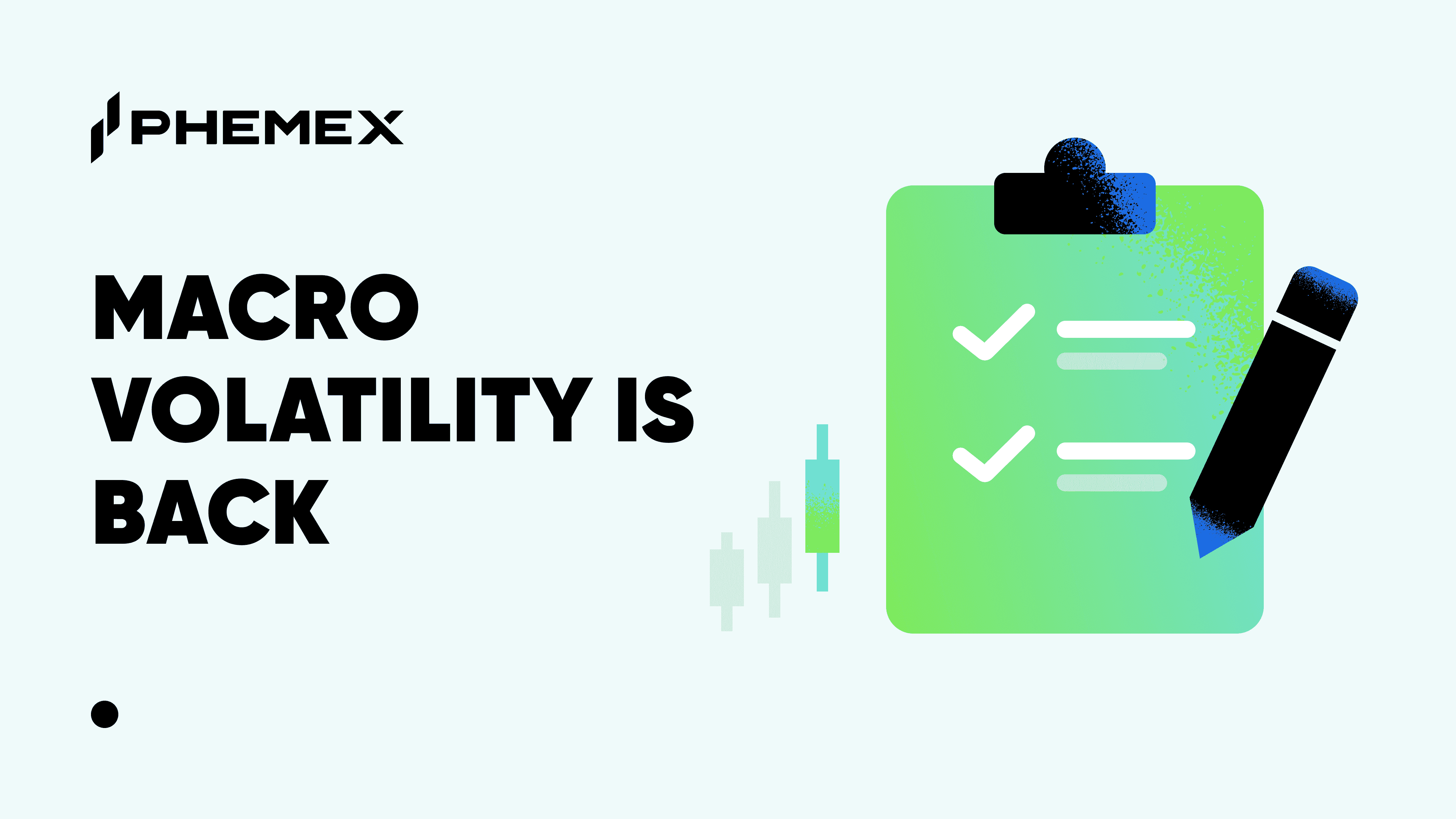
Unless you’ve been living under a rock, you’re probably aware that Bitcoin has been surging in price over the past week. The “king” of cryptocurrencies soared by over 20% over the past week alone, with a single day boost of nearly 15% on October 23rd alone. For the majority of the crypto community, this sudden rise has been a most welcome sight especially following the prolonged bearish, choppy market that has persisted over the 2nd half of 2023. But the question remains to be asked - what gives? Raking in the gains when the market turns bullish is great, but to be a successful crypto investor over the long-run, it’s even more important to understand the fundamentals behind every major price movement. Let’s take a look at the multitude of potential reasons for why BTC is up recently.

Bitcoin ETF: Approval Imminent?
The strongest narrative that’s been driving Bitcoin price advancement is the pending approval of spot Bitcoin ETF. Recent excitement has been brewing over BlackRock’s ETF appearing on a list controlled by the DTCC (Depository Trust and Clearing Corp.), which has led many to believe that approval for the BlackRock BTC ETF is coming. While the listing on DTCC isn’t a definite indicator that the ETF will materialize, it does signal that BlackRock is making preparations to launch the fund. Two weeks ago, a false report that the BlackRock ETF had been approved by the Securities and Exchange Commission (SEC) resulted in a separate BTC price spike. These volatile price hikes demonstrate that many in the cryptosphere are monitoring the ETF situation closely and expect the market to react significantly upon any major update.
What is a Bitcoin ETF?
To understand why the ETF is such a big deal, we must first understand what it is. An exchange-traded fund (ETF) is a type of investment used in traditional investing that follows the price of an asset or a collection of assets. ETFs offer a simple way to invest in several different assets at once without having to hold the individual assets.
Following this logic, a Bitcoin ETF would be a fund that tracks the price of Bitcoin. By investing in such an ETF, customers can get Bitcoin exposure and profit from BTC’s growth without having to go through the hassles of actually obtaining Bitcoin, such as registering for an exchange and going through potential verification processes.
Beyond the purely functional aspect of a Bitcoin ETF, one major reason why the market is reacting so positively to this narrative is because many believe that if a spot BTC ETF is approved, it would lend a great deal of legitimacy to the cryptocurrency. After all, some of the world’s leading financial institutions such as BlackRock are applying for an ETF. Many traditional stock and mutual fund investors who might not have considered cryptocurrency to be a serious investment vehicle previously may be swayed after a Bitcoin ETF is available.

Spot vs. Futures Bitcoin ETFs - What’s the Difference?
Currently there are already ETFs associated with Bitcoin available, such as the ProShares Bitcoin Strategy ETF (BITO) that was launched in October 2021. However, these existing ETFs do not invest directly in spot Bitcoin and are instead associated with Bitcoin futures contracts.
Bitcoin futures are contracts to purchase or sell Bitcoin at a specific price on a prearranged date. This means that if you buy the ProShares Bitcoin Strategy ETF, you are getting exposure to a fund that is holding futures contracts. Since futures contracts are typically utilized for hedging or speculation, sophisticated investors can pair their stake in such an ETF with other trades. However, because a futures ETF doesn’t actually purchase or hold Bitcoin directly, many believe that they are not truly indicative of cryptocurrency adoption.
All the advantages of a Bitcoin futures ETF are also present in a spot ETF, including the ability to invest in Bitcoin without having to use an exchange, potentially lower fees, and overall a more streamlined purchasing process. The main difference is that a spot ETF makes spot investments in Bitcoin, which many believe is more legitimate than its futures counterpart.
Bitcoin ETF History and Narratives Driving Price
Historically, there have been rumblings of Bitcoin ETFs dating as far back as 2016. Grayscale was the first to file an application with the SEC, but retracted it a year later in 2017 due to negotiations stalling. Since then, Grayscale has launched a second application in 2021 along with many other well-known financial institutions. Earlier in the week courts finalized a ruling made in favor of Grayscale against the SEC, which subsequently means that the SEC must re-review Grayscale’s request to turn GBTC into an ETF. It’s just another sign that a spot BTC ETF is eventually coming despite the SEC pushing back on it earlier this year, fueling speculation and driving up Bitcoin price this week.
At this moment the crypto community is mainly awaiting word on the approval of spot Bitcoin ETFs from BlackRock, Invesco, and Fidelity. Following BlackRock’s application filing in June of this year, its ETF is anticipated to be the first one approved. As the world’s most prolific provider of ETFs and with trillions in assets under management, Blackrock officially entering the cryptocurrency market would certainly lend an air of credibility.

One substantial reason why crypto prices are going up recently is because once a spot ETF is approved, significant institutional adoption may be at hand. After all, to run a spot Bitcoin ETF BlackRock or Fidelity must hold Bitcoin in the first place. Imagine the amount of cryptocurrency that a trillion dollar fund would be able to accumulate…and you can connect the dots on why much of the community is highly bullish on the prospect of ETF approval. However, the counterpoint must also be mentioned that it’s possible that BlackRock or Fidelity already hold a mountain of Bitcoins, meaning institutional demand will not be suddenly spurred after approval. Proponents of decentralization that these large institutions’ entry into crypto may lead to the accumulation of Bitcoin supply in the hands of just a few organizations, leading to centralization that directly contradicts the original mission of blockchain in the first place.
The Bitcoin Halving
While current discussions are heavily focused on the ETFs, one must not forget the upcoming Bitcoin Halving event scheduled for April 2024. It may be a medium-term narrative that’s also driving recent price ascension.
The Bitcoin Halving is an essential event in the cryptocurrency’s network that occurs approximately every four years. During this event, the number of new Bitcoins created and earned by miners as a reward for validating and securing transactions is halved. The purpose of the halving is to control the supply of new Bitcoins, ultimately leading to a limited and predictable issuance schedule.
Historically, the halving has been associated with triggering the next big bull run. Past halvings in 2012, 2016, and 2020 have led to new all-time high prices for BTC in the following year.
- 2012 Halving: BTC price rose by 77,600% approximately 392 days after the first ever halving that occurred on the blockchain network.
- 2016 Halving: After around 553 days after the 2016 halving event, Bitcoin had risen about 2,100%
- 2020 Halving: Over a period of 567 days after the 2020 halving, BTC price surged by 660%.

Historical evidence shows that each halving leads to a bull run in which Bitcoin price rises significantly, though by less than the previous halving event achieved. This makes sense because as the anchor price of Bitcoin rises, the network’s market capitalization grows and it’s impossible to expect the asset to continue climbing in proportion to its earlier years. However, while hype has been building around the 2024 halving, past movement is not necessarily indicative of future performance. Other market factors must be taken into account when predicting long-term price, but as the recent upswing in BTC may be partly attributable to the positive outlook from 2024 halving.
Conclusion
The crypto market today is certainly more exciting and volatile than several months ago. Bitcoin’s sudden rise is likely mostly due to spot ETF buzz, with a sprinkle of other elements such as the upcoming halving and bullish court rulings. The surge has come at an opportune time for Phemex users, because the platform’s 1000 BTC Challenge rewards participants with a huge BTC prize pool depending on what Bitcoin price is on October 31, 2023. Following this recent spike, Phemex might be giving away 10 or even 100 Bitcoin to qualified holders of the Phemex Soul Pass. The exchange is riding recent bullish fervor by launching its utility token, the Phemex Token in late November. As the Bitcoin market hopefully continues to outperform, be aware of adjacent opportunities to profit via other well devised Web3 projects like Phemexia.










